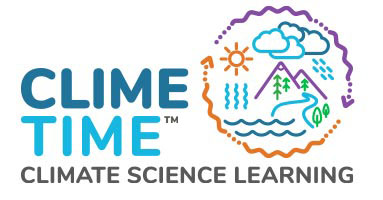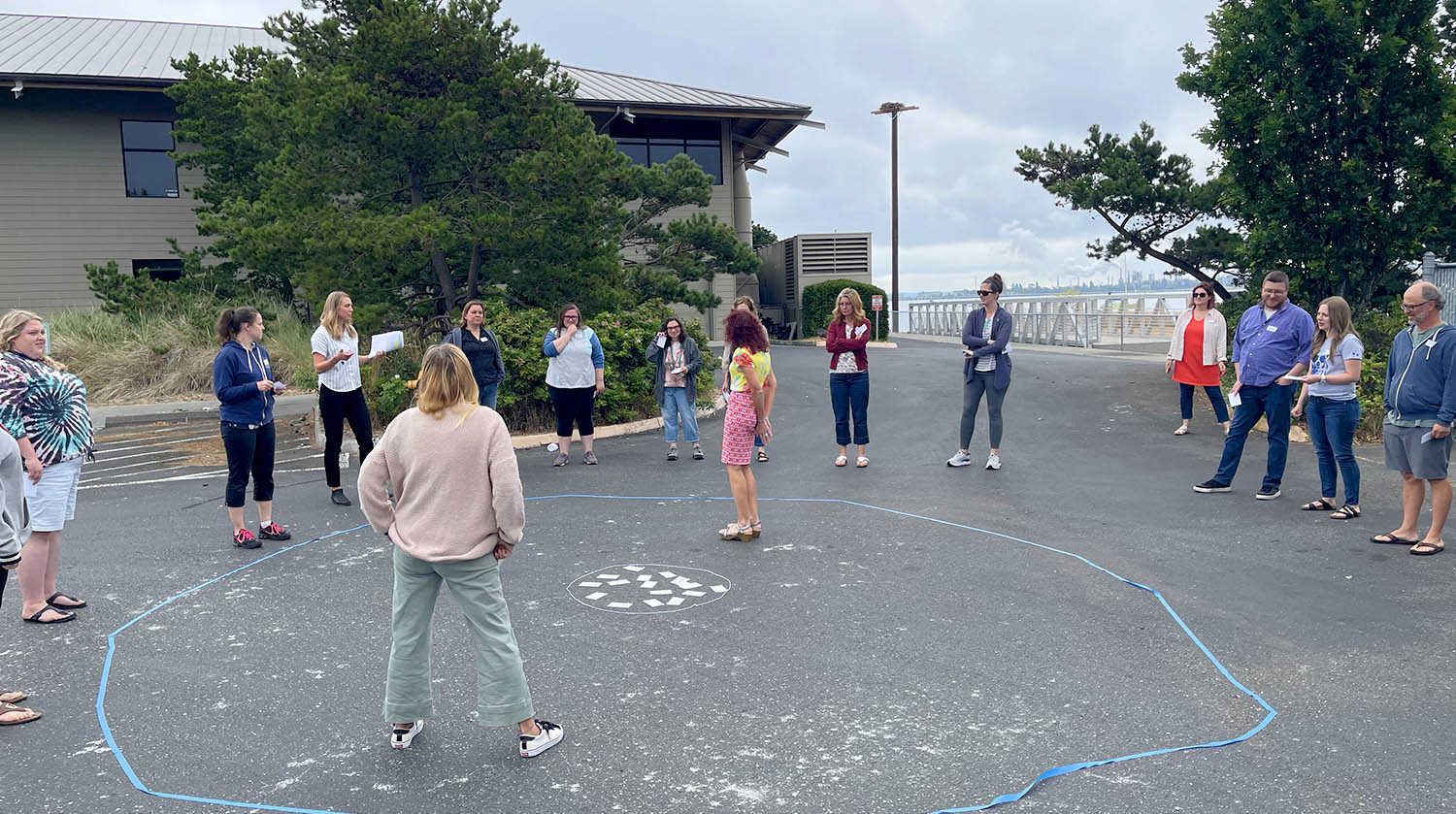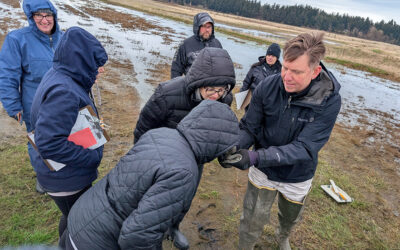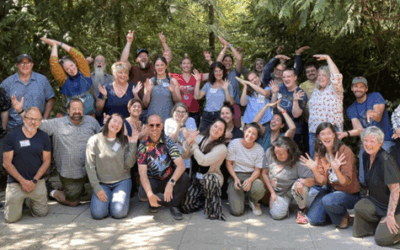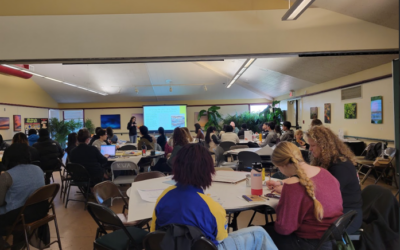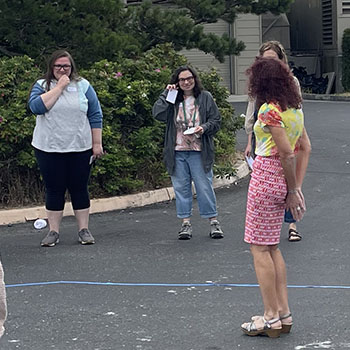
Teachers played a game that illustrates the greenhouse effect by having students take on roles as light from the sun, heat escaping the earth, and CO2 molecules trapping heat in the atmosphere.
Pacific Education Institute (PEI) began a new school year of ClimeTime workshops with Northwest ESD in Anacortes! On August 3, FieldSTEM Coordinators Tressa Arbow, Molly Griffiths, and Amy Keiper led a workshop for 20 K-12 educators eager to learn about PEI’s Solutions Oriented Learning Storylines (SOLS) focused on Solar Energy.
The group started outdoors with a game that demonstrates the greenhouse effect and allows students to manipulate the number of CO2 molecules in the atmosphere by taking actions that remove, add, or maintain carbon dioxide emissions. With the greenhouse effect as a learning foundation, teachers explored how they could use the concept and the game with various grade levels to enhance students’ understanding of solar energy processes.
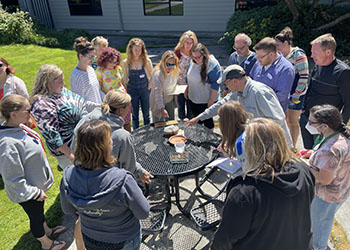
After predicting which material would cause an ice cube to melt faster in the sun, teachers observed, analyzed, and discussed the results of the activity.
Two guest presenters provided personal connections and local relevance for solar energy initiatives in the area. Sean Lawrence, Director of Economic Policy for the Lummi Nation, shared about the tribe’s ways of life and connections to the region’s land and resources. He also shared their successes, goals, and current solar energy initiatives, which are part of the Lummi Nation’s Strategic Energy Plan.
Paula Seaman, Principal at Hillcrest Elementary School, brought a model of the solar panel Hillcrest students created to heat their school greenhouse. Teachers not only learned about the model, process, and materials used, but also received advice about how to get staff and community buy-in for school-based solar energy projects.
The sun came out in the afternoon, providing a perfect opportunity for facilitators to demonstrate one of the many hands-on activities provided in the SOLS to help solidify students’ understanding of solar energy. In this activity, teachers explored how different materials interact with thermal energy by predicting and testing which materials would absorb more heat and cause ice to melt faster.
When not outdoors or engaging with community partners, teachers explored NGSS alignment in the SOLS, practiced activities to elevate student voice, and researched solar energy concepts to build their own background knowledge. In workshop evaluations, teachers reported increased knowledge in all these categories and shared how they’ll use the SOLS this school year. One participant said, “I loved the tools, resources, and website connections that I will be able to use immediately with my kids!”
